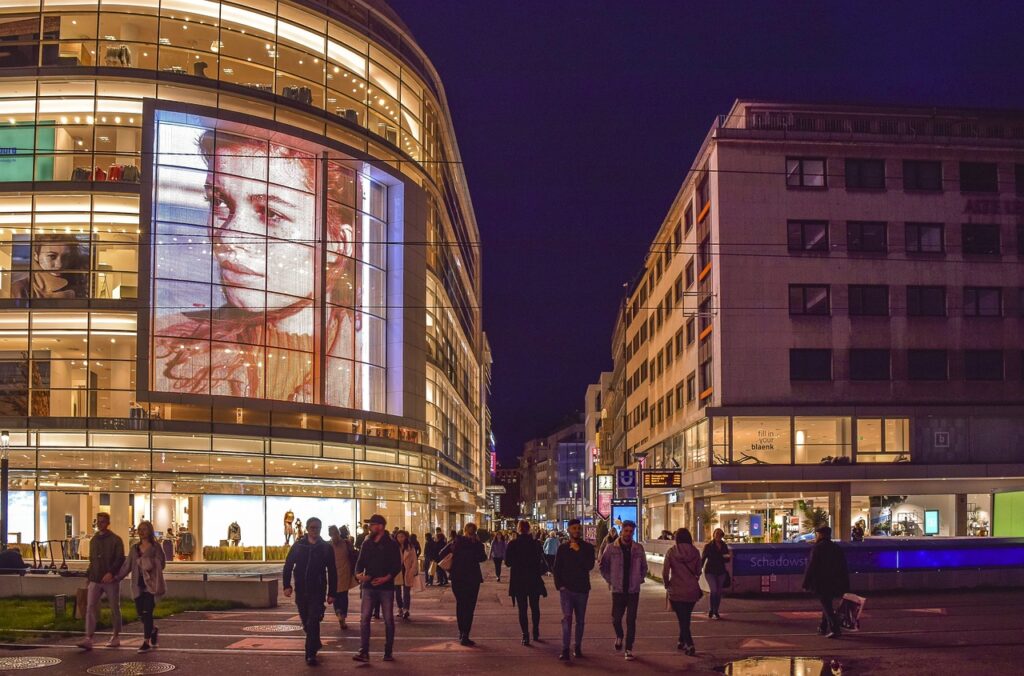
Table of Contents
INTRODUCTION
In today’s competitive digital marketing landscape, businesses are constantly looking for ways to optimize their advertising efforts. One powerful strategy that helps advertisers maximize their ad spend and reach the right audience is geotargeting. In this blog post, we’ll explore what geotargeting is, how it works, its benefits, and best practices for using it in PPC (Pay-Per-Click) advertising.
What is Geotargeting in PPC Advertising?
Geotargeting, or location-based targeting, is a form of advertising where the marketer can target the user by his/her geographical location. It can be specified as country, state, city, zip code, or even within a radius of a specific place.
By employing geotargeting, companies can align their PPC campaigns to local audiences so that their ads reach the most appropriate users, which further results in improved engagement and greater conversions.
How Geotargeting Functions in PPC
Geotargeting functions by leveraging the location information of users, which can be obtained from different sources, including:
- IP addresses: Websites and ad platforms use IP addresses to identify users’ locations.
- GPS & cellular data: Mobile phones offer accurate location information using GPS and cellular signals.
- Wi-Fi & Bluetooth signals: Connected devices can be monitored for targeting based on the network they are connected to.
- User input: Users sometimes voluntarily share location information, for example, by completing a form.
Ad platforms such as Google Ads, Facebook Ads, and Microsoft Advertising enable advertisers to implement location-targeting within PPC campaigns. With this feature, their advertisements can be displayed to users in their chosen geographic locations only.

Advantages of Geo targeting within PPC Advertising
1. Increased Relevance
GEO targeting enables companies to reach potential customers who are likely to click on their advertisements since they are at the right location. For instance, an in-restaurant business can target people within a distance of 5 miles from their location rather than advertising to those who are far away.
2. Improved ROI (Return on Investment)
Because geo targeting allows advertisers to target users who have a higher probability of converting, ad budgets are being utilized more efficiently, which results in greater return on investment.
3. Improved Customer Experience
When the user views advertisements that are local to their region, they tend to interact with them more. Localized and personalized messaging enhances the overall customer experience.
4. Increased Click-Through Rate (CTR)
Ads that target a particular region are more likely to have greater CTR since they are more relevant to the needs and interests of users in that region.
5. Competitive Advantage
Companies that use geotargeting efficiently are able to beat their competitors by placing their ads in front of the correct audience at the correct time.
Best Practices for Using Geotargeting in PPC
1. Define Your Target Locations Clearly
Before you launch a geotargeting campaign, examine where your customers are. Utilize tools such as Google Analytics to see top-performing areas and target those areas in particular.
2. Use Radius Targeting
Rather than targeting large areas, use radius targeting, which enables you to display ads to users within a certain radius of your business. This is particularly helpful for local shops, restaurants, and service businesses.
3. Optimize Ad Copy to Target Local Users
Enrich your ads by incorporating location-related keywords. For instance, rather than a common ad such as “Best Pizza in Town”, you can make use of “Best Pizza in Downtown New York!” so that the ad directly targets local buyers.
4. Optimize Bids According to Location Performance
Not every place performs the same. Check your campaign data and raise bids on high-performing places and lower bids on underperforming areas.
5. Utilize Exclusions to Prevent Unwanted Clicks
To avoid throwing ad spend, exclude places where your services aren’t offered or where conversions are low.
6. Take Advantage of Geotargeting for Mobile Users
Mobile users are more likely to engage with location-based ads, particularly for services such as food delivery, ride-hailing, or local shopping. Make sure your campaigns are mobile-optimized.
7. A/B Test Different Locations
Conduct A/B tests by targeting various locations and measuring which ones lead to improved engagement and conversions. Use this information to improve your geotargeting strategy.
8. Combine Geotargeting with Other Targeting Methods
To give it maximum traction, use geotargeting with demographic, behavioral, and interest-based targeting. This assists further in limiting your audience for greater efficiency in the campaign.

Examples of Geotargeting in Action
1. Local Retail Stores
An apparel store in Los Angeles promotes a PPC advert reaching individuals in a 10-mile radius advertising a special in-store discount.
2. Event Promotion
A Chicago music festival employs geotargeting to display ads to users in surrounding cities, promoting ticket sales.
3. Ride-Sharing Apps
Uber and Lyft employ geotargeting to present ads for their services depending on the user’s location.
4. Tourism & Hospitality
A hotel chain targets users looking for places to stay in a particular city, so their ads are only displayed to individuals who intend to visit.
Sophisticated targeting Methods for PPC Optimization
- Weather-Based Geotargeting
Certain industries, such as fashion stores and food delivery platforms, leverage current weather conditions to optimize their PPC campaigns. For instance:
- A clothing company can advertise raincoats in rain-heavy cities.
- An ice cream company can enhance ad bids where there is a heatwave.
- Geofencing for Real-Time Interaction
Geofencing enables advertisers to set virtual fences around locations. When a user enters the region, they are shown targeted ads.
Example: A restaurant within a shopping mall can prompt special deals to users entering the area.
- Hyperlocal Targeting with Beacon Technology
Retailers can employ beacons (small Bluetooth devices) to deliver personalized ads to shoppers in a store or a department.
Example: A mall-based shoe store can send promotional notification to individuals passing by the store.
- Competitor Conquesting with Location-Based Ads
Certain brands employ geotargeting to show ads to users around their competitors’ business locations.
Example: A coffee shop can target users around a competing café with an offer of “20% Off.”
- Language-Specific Targeting
Multinational companies operating in regions where different languages are spoken can develop different ad campaigns in various languages.
Example: An Ontario business can show English-language ads, and a Quebec business can show French-language ads.
- Location-Based Dynamic Ads
Dynamic keyword insertion (DKI) allows advertisers to personalize ad copy based on a user’s location.
Example: Rather than a generic “Best Lawyers Near You” ad, the system will automatically convert it to “Best Lawyers in Los Angeles.”
- Time-Sensitive targeting
Companies can target geotargeted ads according to time zones and hours of peak activity.
Example: A nightlife event can program ads for evenings in certain cities.
- Travel-Based Targeting
Certain travel agencies show ads to users who have recently arrived at airports, providing last-minute hotel rates or taxi service.
These geotargeting strategies can work wonders in optimizing the performance of your PPC campaigns by making the right message appear before the right people at the right time.

Building Upon Combining Geotargeting with AI & Machine Learning
Geotargeting itself is a strong tool, but adding Artificial Intelligence (AI) and Machine Learning (ML) can increase accuracy, efficiency, and return on investment (ROI) in Pay Per Click (PPC) advertising. Here’s how:
- Predictive Audience Targeting
AI can compare past location history and user trend data to estimate where likely customers will be at a given moment. This enables companies to look ahead to demand and dynamically alter their geotargeting campaigns.
Example: A food ordering company can estimate peak order times in various locations and boost ad spend accordingly.
- Location Performance-Based Automated Bid Adjustments
Rather than manually optimizing bids for various locations, ML algorithms can scrutinize where the best conversions are coming from and update bids up or down in real-time automatically.
Example: If ads where the downtown areas are converting better than suburban regions, AI can raise the bid placement on downtown spots.
- Dynamic Ad Tailoring with AI
AI-driven ad platforms are able to dynamically modify ad copy, images, and CTAs based on the real-time location of the user.
Example: A retail chain can show ads with the name, address, and special offers of the nearest store to users in that particular location.
- Hyperlocal Personalization with AI-Driven Insights
Machine learning algorithms can segment users by their historical visits, interests, and buying behavior within certain locations.
Example: A gym chain can target individuals who regularly visit fitness-related places (sports stores, health food shops) with personalized PPC ads.
- Geofencing & AI-Powered Real-Time Triggers
AI improves geofencing by deciding when and in what manner to display ads considering user behavioral patterns.
Example: An app for a shopping mall can initiate targeted ads when a user approaches a specific geofenced area.
- Sentiment Analysis & Location-Based Marketing
Sentiment analysis tools driven by AI can evaluate online ratings, social media posts, and user-generated content related to various locations in order to streamline PPC campaigns.
Example: If the number of negative reviews surges in a given city, companies can adjust their geotargeting approach to enhance brand sentiment there.
- AI-Driven Fraud Protection Against Location Spoofing
AI can protect against ad fraud by detecting doubtful location data to ensure that PPC campaigns reach legitimate customers, rather than bots or fake locations.
Final Thoughts
Geo targeting is an effective tool in PPC advertising that allows companies to target their desired audience with accuracy. Advertisers can boost conversions, enhance ad relevancy, and maximize ad spend by using effective geo targeting strategies.
No matter if you’re a local business or a global brand, adding geotargeting to your digital marketing strategy can provide you with a competitive advantage and connect you with the right consumers at the right time.
By merging geotargeting with AI and machine learning, advertisers are able to craft smarter, data-driven campaigns that drive hyper-personalized experiences, ad spend optimization, and conversion maximization.
Are you applying geo targeting to your PPC campaigns? Let us know in the comments!